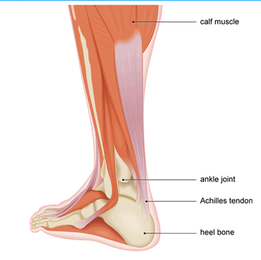Achilles Tendon Injury
What are the symptoms?
What causes Achilles Tendinopathy? There are certain risk factors that may lead some people to developing Achilles tendinopathy, many of which relate to changes in load through the tendon rather than to a person’s biomechanics.
There are three questions that should be considered:
Physiotherapy principles The key areas that physiotherapy focuses on are as follows:
There is good evidence that slow, heavy load-strength training can improve a tendon’s tolerance to load and this is one of the gold standards for treatment. It is important, though, to avoid overload through other aspects of training while strength training, otherwise it may fail. While there may also be specific biomechanical factors feeding into the tendinopathy. Your Physiotherapist will consider the whole chain when assessing, including looking at the hips and knees any spinal involvement. More common than biomechanical problems are training errors. Most people we see present with Achilles tendon problems when they have radically changed their training load. All the evidence points towards load management as the best way to treat Achilles tendinopathy. And it is important to give it time before considering other options – we suggest three to six months. Bath Achilles Tendon Physiotherapy
|
AuthorPhysioimpulse Chartered Physiotherapists Archives
June 2024
|
Services |
Get in Touch
|
©


 RSS Feed
RSS Feed

